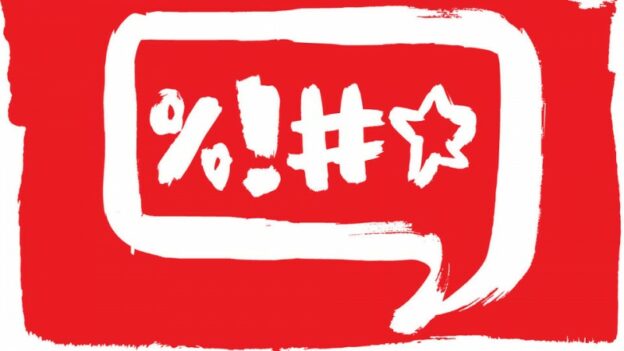

A Judaism-informed thought about free speech, born of Twitter’s cancellation of President Trump’s account, is at:
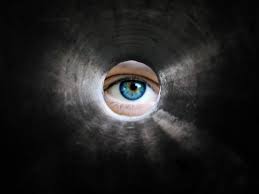
Political Myopia
Those who blame President Trump for the January 6 attack on the Capitol, who point to his years of belittling and vilifying people and his egging on of the large crowd of supporters shortly before the mob violently descended on the seat of Congress, are missing something important.
To read what, please see:
https://www.amimagazine.org/2021/01/13/political-myopia/
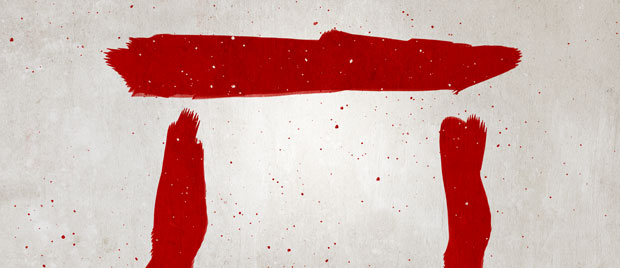
Parshas Bo – Letter from Egypt
Chazal describe the Jewish people as a miracle. Our foremothers, for instance, were physically incapable, the Midrash informs us, of bearing children. Yet, despite the laws of nature, they did.
Jewish history, no less, testifies to the miraculous existence of Klal Yisrael. Despite the vicissitudes of our history, our repeated scatterings and exiles, and the insane but ever-present desire of some to wipe us out, we have persevered, and persevere, as a people.
The alpha-point of our peoplehood is in our ancestors’ exodus from Egypt, their leaving behind of their servitude to men for the holy calling of servitude to Hashem. And in this week’s parshah, we read of the preparation for doing that, which includes the first Pesach sacrifice and, perplexingly, the placing of some of the animal’s blood on each Jewish home’s doorposts and lintel — a ritual referred to as an ōs — a “sign” (Shemos, 12:13).
But ōs can also mean a letter of the aleph-beis, the Hebrew alphabet.
The celebrated 16th century Torah luminary, Rabbi Yehudah Loew ben Betzalel, the Maharal, famously associates the number seven with nature, and the next number, eight, with “above” or “beyond” nature — what we would call the miraculous.
Picture the Jewish doorways in Egypt just before the exodus. Imagine away the edifice itself, leaving only the sign of the blood, in two vertical parallel lines along the doorposts and one horizontal one, above and connecting them.
The image is that of a ches, the eighth letter of the Hebrew alphabet.
© 2021 Rabbi Avi Shafran

The Vaccine is Here! — but there’s something to beware of
The vaccines are here, baruch Hashem. But are there reasons to be wary about availing oneself of the injection? To read my answer, please click here.

Parshas Vo’eira – A Partnership of Opposites
Only one of the Ten Plagues visited upon Par’oh and Mitzrayim elicits a declaration of guilt and admission of Hashem’s righteousness from the Egyptian leader.“
This time I have sinned,” Par’oh admits. “Hashem is the righteous One, and I and my nation are the wicked ones.” (Shemos 9:27).
It is the plague of hail. Why, of all the other punishments, that one?
What occurs is that the answer may lie in the Midrash brought by Rashi (ibid, 24), that each piece of hail contained a flame, and that water and fire “made peace with each other” in order “to do the will of their Creator.”
Par’oh was an idolater. The Egyptians worshipped the Nile and, according to historians, the sun. Idolatry entails choosing a “team” to be on. One can be on Team Nile, Team Sun, Team Water, Team Fire…
Monotheism entails the recognition that all the “teams” (elohos) are subservient to the one Creator of all the elements (Elohim).
Perhaps Par’oh was forced to confront and internalize that fact by having witnessed, during the plague of hail, the “partnership” of opposites.
Truth be told, we are all comprised of opposites: souls and bodies. Each has its own desideratum. The only way to “make peace” between them is doing the will of our Creator, which requires both elements to work together.
© 2021 Rabbi Avi Shafran
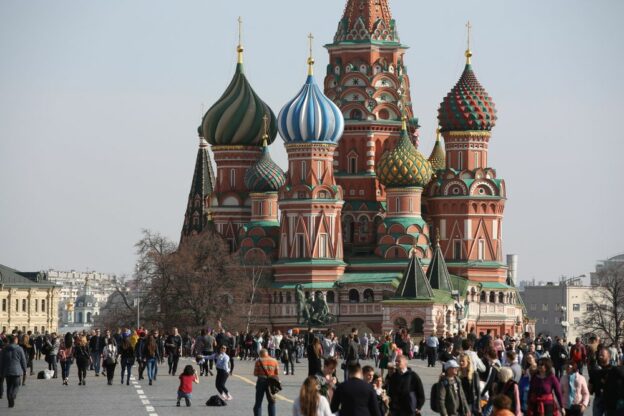
Kremlin Gremlin
Ever heard of the Pranky? The award for the year’s best prank? No? Well, when you read my most recent Ami column, you’ll get to read all about it — and discover who won the coveted prize this year.
The column’s at
https://www.amimagazine.org/2020/12/30/kremlin-gremlin/

parshas Shemos: Pathetic Persecutors
As the Jewish population in ancient Egypt swelled, the Torah tells us that vayakutzu — The Egyptians “were disgusted” (Shemos 1:12). Rashi explains that “they were disgusted with their [own] lives.”
A superficial reading of vayakutzu would lead to a simpler understanding, that the Egyptians, out of fear (as pesukim 8 and 9 describe), found the Jews, not themselves, disgusting. What is the significance of Rashi’s comment?
The Mei Marom (Rabbi Yaakov Moshe Charlop, 1882-1951) posits that the pasuk is teaching a psychological truth: It is impossible to embitter the life of another unless one is embittered with himself. Anyone who appreciates and cherishes his own life will perforce be concerned about the lives of others.
And so, Rabbi Charlop concludes, if one sees someone oppressing another, one can surmise that the oppressor’s cruelty is fundamentally sourced in self-loathing.
© 2021 Rabbi Avi Shafran
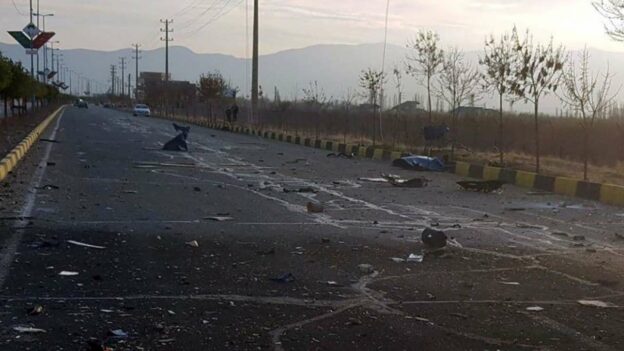
The Deal Can Wait
There’s probably no great rush among Iranian science majors to choose careers in the country’s nuclear research program. For good reason. The positions — and their holders — have often proven short-lived.
Over the past decade, at least five major Iranian nuclear scientists were assassinated, the most recent one, Mohsen Fakhrizadeh — thought to be the mastermind behind Iran’s nuclear program — just last month.
Whether Mr. Fakhrizadeh was killed by a hidden, elite sharpshooter squad or, as Iranian security officials have said, remotely, by satellite-controlled gunnery equipped with facial recognition software, the killing was clearly sophisticated, well planned and well executed.
Which, of course, made Israel a prime suspect. The motive was certainly there.
Because JCPOA, the “Joint Comprehensive Plan of Action” a.k.a.“the Iran Deal,” itself lies gravely wounded — the U.S. pulled out of it in 2018, and Iran has subsequently violated some of the agreement’s major restrictions, including the amount of enriched uranium it is allowed to stockpile and the purity to which it is allowed to enrich the element.
And so, Israel, the “little satan” Iranian leaders have repeatedly threatened, would understandably like to see Iran’s nuclear development program, well… set back. Fewer nuclear experts, fewer capabilities to create nuclear weapons.
But whoever was ultimately behind the scientists’ untimely ends, the labor-intensive setting up and execution of the projects “on the ground” was overwhelmingly likely to have been the work of Iranians.
Could they be mercenaries hired by a power like Israel or the U.S., or Iranians sympathetic to Israel? Anything is possible. But it’s also possible that the people who made the hits happen are operatives of one of two Iranian anti-government groups.
Those of us who qualify for senior citizen discounts on buses and trains likely remember when — yes, youngsters, it is fact — Iran and Israel were close allies. Iranian-Israeli military links existed, weapons projects were undertaken in tandem and El Al operated direct flights between Tel Aviv and Tehran.
That was back in the days of the Shah, Mohammad Reza Pahlavi, who ruled Iran from 1941 until 1979, when the Iranian Revolution brought Islamist Ayatollah Ruhollah Khomeini back from exile and the mullahcracy began.
The Shah fled to Egypt, where he died the next year. At the time, his son and heir to the throne had the throne persisted, Reza Pahlavi, was a trainee fighter pilot in Texas. Today, 60 years old and living in Maryland, he still aspires to return to Iran — and to return Iran to its happier past.
Reza Pahlavi leads a body called the National Council of Iran for Free Elections, an umbrella group of exiled opposition figures seeking to overthrow Iran’s current government. The would-be Iranian leader claims to have clandestine supporters within the Iranian military, including the Revolutionary Guard.
Similarly seeking to replace the mullahs is the National Council of Resistance of Iran, which aims to establish a pluralistic, multi-party and democratic system in Iran.
Sympathizers in Iran of either of those groups could have been the actual assassins of the late Iranian nuclear scientists. What is undeniable, though, is that Iranian resistance movements exist. And one or more of them may be working together with… whatever outside power is trying to keep Iran from joining the international nuclear weapons club.
That fact should give pause to President-elect Biden, who has expressed his desire for the U.S. to rejoin the Iran Deal. To be sure, there are rational reasons to try to do that, especially if the restrictions on Iran are tightened, something Mr. Biden has pledged to pursue. The deal, after all, did prevent what Iran is openly up to now.
But there’s no hurry. The U.S. sanctions currently in place continue to take a devastating toll on Iran’s economy; the country’s inflation rate is currently running around 40 percent. And the brazen assassinations — along with the 2018 Israeli operation that “borrowed” important documents outlining Iran’s nuclear designs, and a series of explosions over recent months that have destroyed a centrifuge factory, a secretive military installation and a missile facility — have surely made Iran’s leaders keenly aware that their country is rather vulnerable to formidable adversaries.
So, the incoming Biden administration would be wisest to let the pressure on Iran continue to build — to enforce the sanctions in place, to encourage the Iranian movements seeking to overthrow the Islamic Republic of Iran, and to continue to strengthen whatever entity it suspects has been undermining Iran’s nuclear ambitions.
© 2020 Ami Magazine
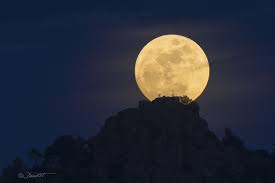
Parshas Vayechi – The Real Man in the Moon
In a good example of Talmudic humor, Rav Nachman reacted to Rav Yitzḥak’s recounting of what Rabi Yochanan said, that “Our patriarch Yaakov did not die,” with a wry question: “So was it for naught that the eulogizers eulogized him and the embalmers embalmed him and the buriers buried him?” (Taanis, 5b).
The way to understand the contention that Yaakov didn’t die, I think (and it’s borne out of the verses quoted in that Gemara), is that he lives on — as the patriarch whose children, all of them, became the progenitors of Klal Yisrael — through the eternal Jewish people.
The Midrash in Vayeishev, commenting on Yosef’s dream about the sun, moon and stars bowing to him, has Yaakov wondering, “Who revealed to him that my [secret] name is ‘sun’?”
It’s interesting to reflect (pun intended) on the fact that the moon — the symbol, in its waxing and waning, and in its role in the Jewish calendar, of Klal Yisrael — reflects the light of the sun. We reflect Yaakov, are the continuation of his life.
Even more interesting, according to the Tikkunei Zohar, “the image of Yaakov is carved out [i.e. visible] in the moon.”
© 2020 Rabbi Avi Shafran
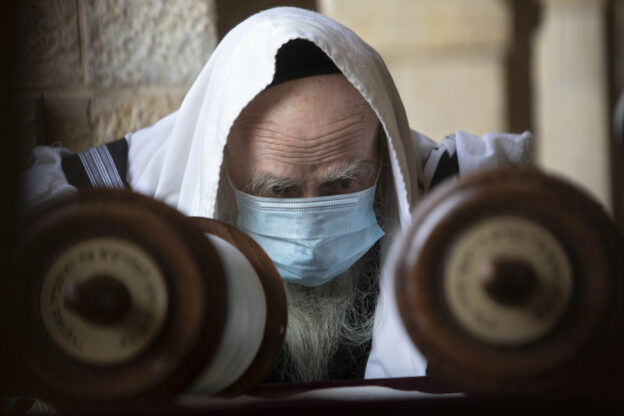
Mask Ask
Back in the day — by which I mean this past spring — I was a resolute non-masker. When shopping, of course, I followed stores’ rules. But in shul, I was part of the majority of attendees who, while shunning hand-shaking and coughing in other people’s faces, chose to not self-suffocate. In my long-favored hashkamah minyan, which required masks, I was granted permission by the maskers to sit behind a mechitzah in the back of the room.
But today I wear a mask religiously, both meanings intended. Because my objection to masking had only been because I felt that the benefit of covering my mouth and nose was outweighed by the danger to my health in not receiving sufficient oxygen. I could feel, I felt, that I wasn’t getting enough air.
But then I found research that showed that oxygen levels did not decrease as a result of masking — even when the masker was engaged in strenuous exercise (a category in which I don’t think even energetic shukkeling belongs).
And so, I realized that it was really just the discomfort of breathing warm air and enduring fogged eyeglasses that argued against the public health benefit of wearing a mask. I was being a shul snowflake.
Though there are the inevitable gadflies who claim there is no benefit to masking, the evidence for its helpfulness in stemming the spread of infections is compelling. To be sure, there is only limited evidence that mask-wearers are less likely to contract Covid-19, but the real benefit of masking is to prevent infected but asymptomatic people from spreading the virus — in other words, to protect others. For that, there is ample evidence, both from lab experiments and, more importantly, from analyses of the rate of virus spread in communities and countries where masking is routine and others where it is spotty.
And so, masking in groups, is, most simply put, an act of chesed.
Then there is the public perception. Although I write as a private individual, my day job is with Agudath Israel of America, where I interact with the media and the public. The image of the chareidi community, despite that it is very large and very varied, is that its members shun masking. That is a problem.
Because — at least to the limited extent that the perception of chareidi mask-shunning is true — it gives people, other Jews and non-Jews alike, the impression that our community doesn’t care about others.
At the Keynote Session of Agudath Israel of America’s recent (virtual) national convention, the organization’s executive vice president, Rabbi Chaim Dovid Zwiebel, offered a heartfelt, impassioned reiteration of the imperative to follow current health authorities’ advice, and declared that religious Jews who disregard precautions like masking and distancing not only potentially harm the health of others but bring about the opposite of the fundamental Jewish imperative to make “Hashem’s name beloved to others.” Chalilah on both counts.
Personally, ever since I’ve become a masked man, I have come to better appreciate something my dear father, a”h, would often say. And, having been yanked by the Soviets at the start of World War II from the Vilna yeshiva in which he had been studying and banished with his friends and their rebbe to the frozen taiga of Siberia, he was amply credentialed to offer the lesson.
“A person,” he taught his children, “can get used to anything.”
What he meant was that, whatever new situation might confront us, it should never be seen as an insurmountable obstacle. With equanimity and time, we can handle things we never would have imagined were handle-able.
As challenges go, wearing a surgical mask around others rather pales compared to chopping wood in 40 degrees below zero weather. But the lesson is the same.
And, indeed, now I’m so accustomed to my mask that I sometimes forget that I’m even wearing it.
Many hands are being wrung over what, oy vey, the “new normal” might be for perhaps even years to come. I understand the angst.
But I imagine my father just saying, reassuringly, don’t worry, you can get used to it.
© 2020 Ami Magazine